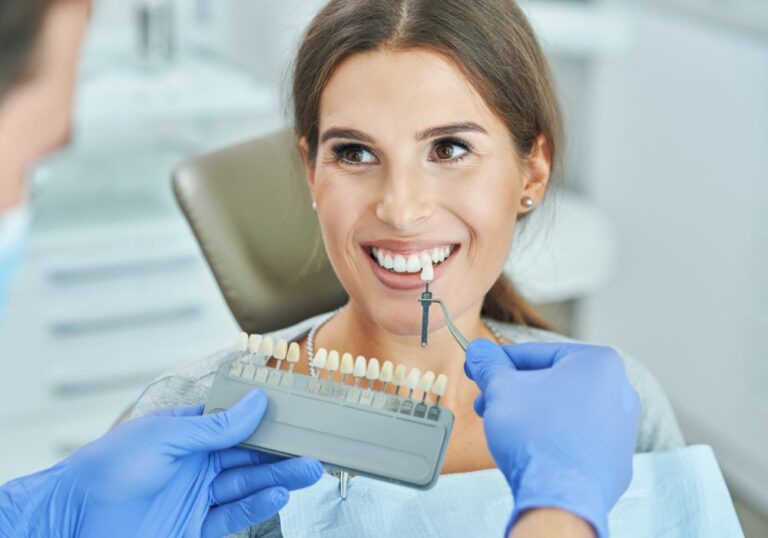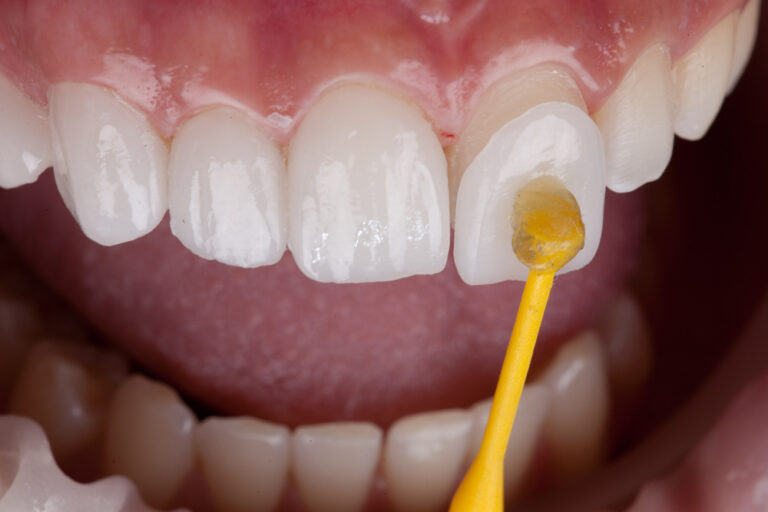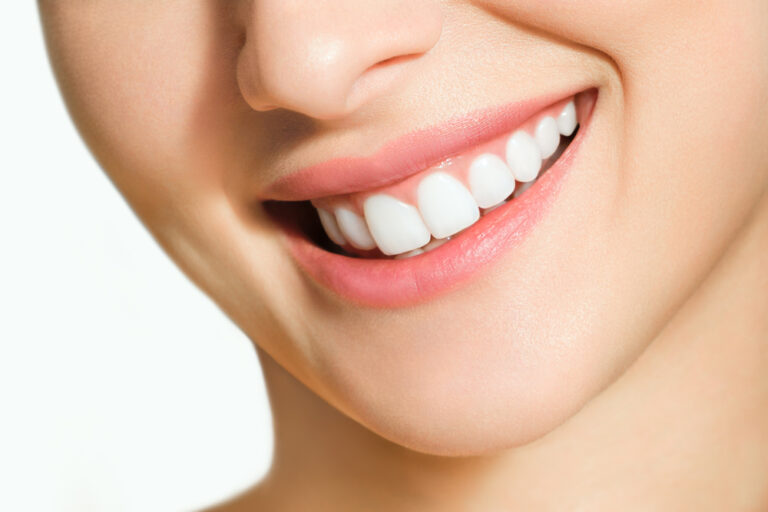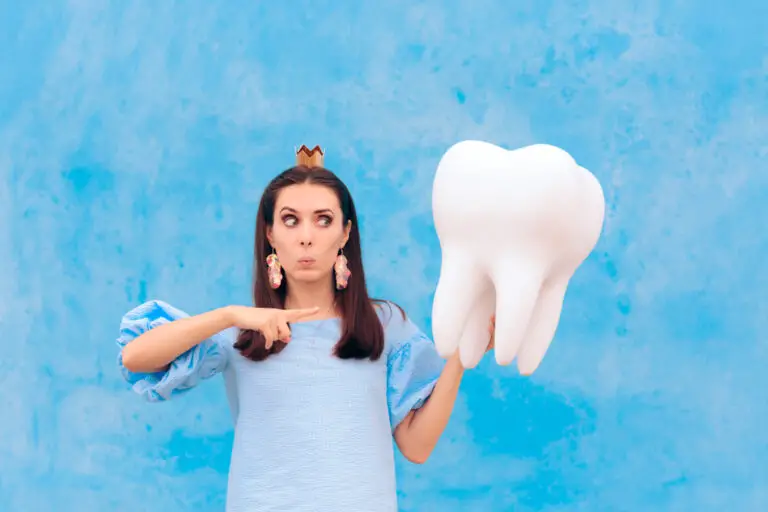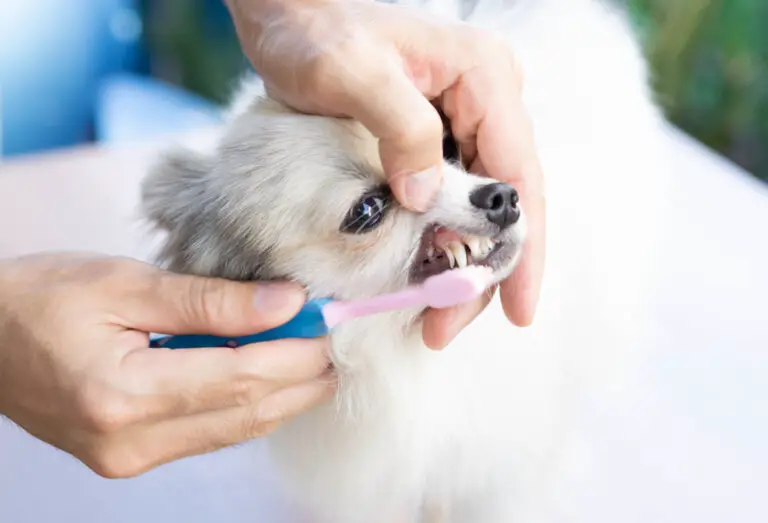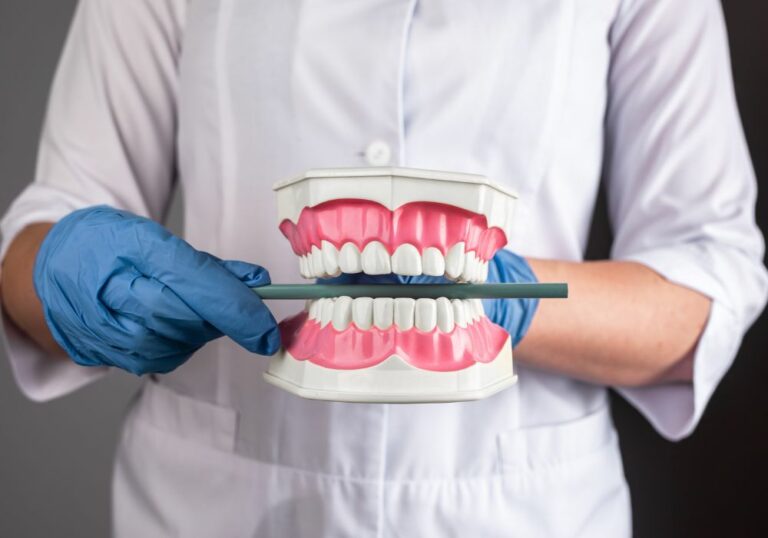Having a loose permanent tooth can be an alarming and uncomfortable situation. You may wonder whether you should pull it out yourself or leave it alone. But there are right and wrong ways to handle a loose or damaged tooth.
This comprehensive guide will examine:
- Common causes of loose teeth in adults
- The stages and symptoms of loosening teeth
- Home remedies to temporarily relieve a loose tooth
- Signs it’s time to see the dentist
- Professional extraction methods
- Associated risks and complications
- Whether loose teeth can re-tighten
- Alternatives when teeth can’t be saved
- Replacement options after extraction
- And more…
Understanding the processes that make teeth loose will help you seek the appropriate dental treatments. With modern techniques, lost teeth can often be restored for complete functionality and a healthy, confident smile.
What leads to tooth loosening in the first place?
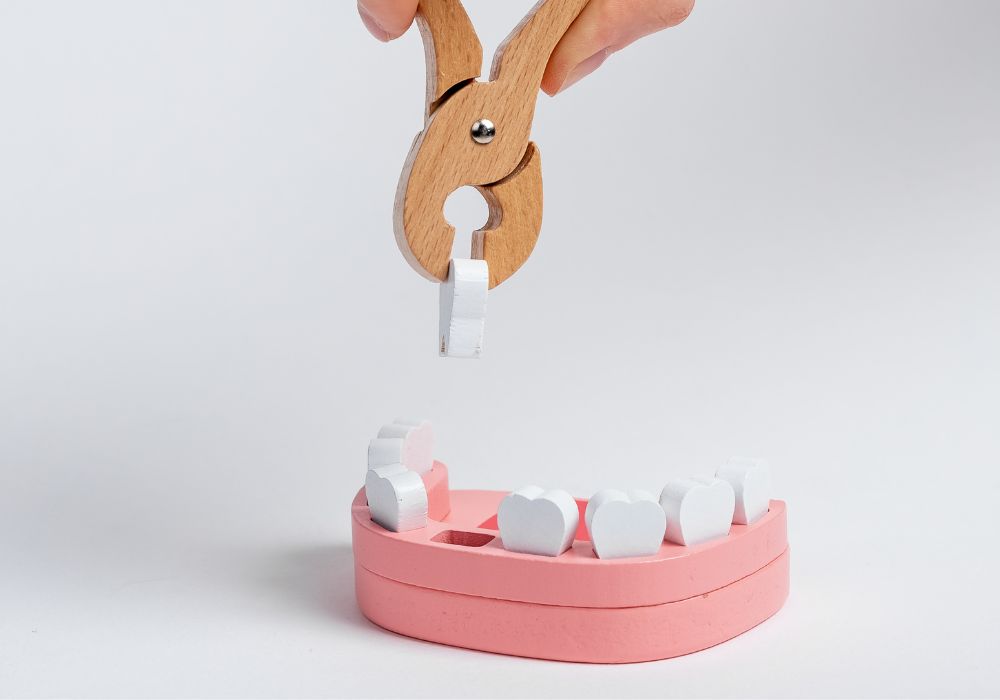
Teeth are normally held firmly in the jawbone by their roots. But certain oral health conditions can damage the tissues anchoring teeth in place. Common causes of loose permanent teeth include:
Gum (periodontal) disease
Chronic bacterial gum infection and inflammation damages the periodontal ligaments and bone surrounding teeth. The tissues become weakened and destroyed, leading to loosening.
Injury or trauma
A blow or hit to the mouth can knock teeth out of their sockets. It’s also possible for teeth to loosen over time after an old injury due to delayed complications.
Excessive grinding or clenching (bruxism)
Chronic force on teeth can microscopically crack roots and wear down bone support. This destabilizes teeth over time.
Tooth decay or failed root canal
Untreated cavities or deep infection inside the tooth weakens structure. The tooth becomes less attached.
Osteoporosis or calcium deficiency
Hormonal changes or nutritional deficits that reduce bone density can contribute to tooth loosening in aging.
Cancer treatments
Radiation therapy to the mouth area can affect the jawbones and make teeth unstable.
Normal exfoliation
In children, naturally loose emerging permanent teeth displace primary teeth. This is not true loosening requiring extraction.
How can I tell if a tooth is becoming loose?
It’s important to recognize the early signs of tooth loosening and address them promptly:
Stage 1: Slightly Loose
- The tooth moves a little in the socket when chewing or biting down
- You may notice a mild sensation of movement if you wiggle it gently
- There is minor irritation and sensitivity to hot or cold
- Early periodontal disease is often the cause
Stage 2: Moderately Loose
- More noticeable give when you touch the tooth, ranging from 2-3 mm of movement
- Feeling some space forming around the base of the tooth
- Pain and discomfort when eating as it moves more
- Increasing infection, swelling, or abscess formation
Stage 3: Very Loose
- The tooth can now be pushed more than 3 mm in any direction
- Little function when chewing as it is barely still attached
- Visible back-and-forth or vertical movement with only light pressure
- The tooth may change position on its own as bone support disappears
Once beyond the initial mildly loose stage, do not delay in seeking professional help. Looseness that continues worsening risks complications.
What are the dangers of playing with a loose permanent tooth?
It can be tempting to push, wiggle, or even try to remove a loose tooth yourself. But this can make the problem much worse and is not recommended. Dangers include:
- Increased mobility: The more you disturb a loose tooth, the looser it will become. Its chance of tightening back up again diminishes.
- Infection: Pushing on the gum tissue can allow oral bacteria to enter the socket, leading to infection.
- Uncontrolled tooth loss: Aggressive wiggling could detach the tooth completely at an inopportune time.
- Damage to other teeth: The loose tooth being moved out of position can start to affect adjacent teeth.
- Swallowing risk: An overly loose baby tooth could release and be swallowed or aspirated.
- Avulsion injury: Attempting to pull your tooth could instead detach ligaments and nerves, causing intense pain.
Avoid biting down or wiggling a loose adult tooth. See your dentist to determine whether extraction or stabilization is required.
Why you should never attempt do-it-yourself extraction
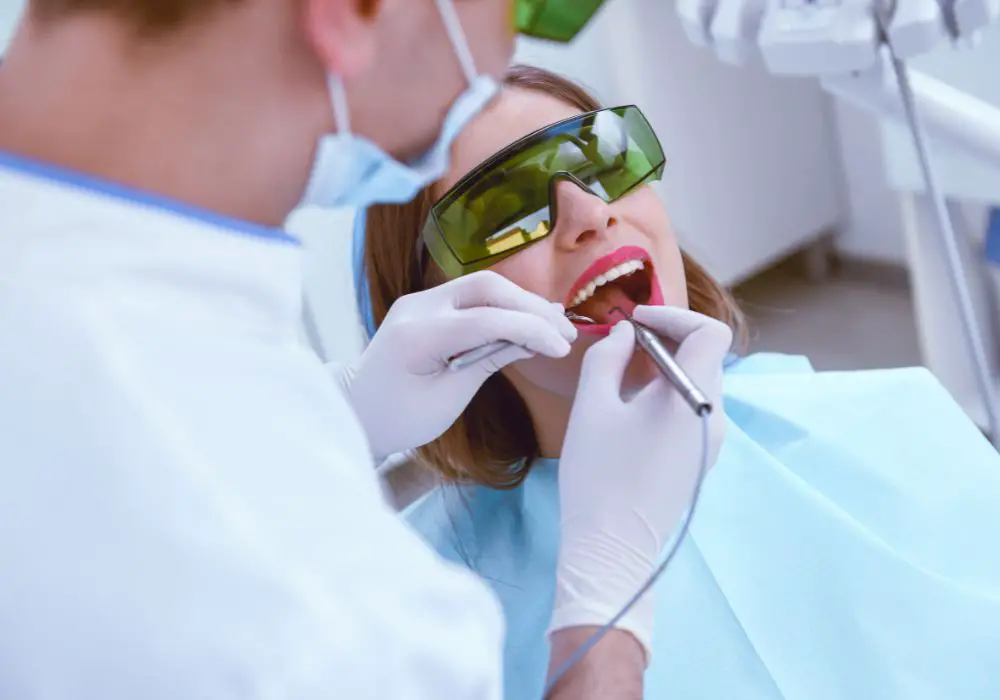
While you might think just pulling out your own loose tooth seems quick and easy, severe complications can occur. Without professional tools and training, you risk:
- Uncontrolled pain: The roots are still connected to nerves that will cause extreme pain if damaged.
- Broken fragments left behind: Attempting to pry out a tooth could break it leaving residual root pieces still stuck in the bone.
- Jaw fracture: Overzealous pliers, dental floss, or other objects used for self-extraction could fracture the jawbone.
- Damage to adjacent teeth: Tools can slip and chip or uproot neighboring healthy teeth in the process.
- Sinus perforation: Upper back teeth have roots extending into sinus cavities. Tugging could puncture the sinus.
- Swallowing risk: The loose tooth could enter the throat and digestive tract if it becomes fully dislodged.
A dentist will use proper instruments and techniques to protect your mouth tissues when removing a tooth. Avoid dental catastrophes and see an expert!
Can bubble gum really help tighten a loose tooth?
Chewing gum is sometimes touted as a home remedy to tighten a wiggly tooth. The idea is that chewing hard gum will push the tooth back into place and stimulate blood flow. However, this is not recommended for true permanent tooth looseness, because:
- More damage likely: Vigorous chewing puts added stress on the already unstable tooth, often increasing mobility.
- Masks underlying issue: Makes a problem tooth feel temporarily more secure when it still requires proper treatment.
- Hurts more than helps: Chewing force and stickiness of gum further irritates the inflamed gums around the loose tooth.
- Choking hazard: A baby tooth could release and stick in the gum, presenting a choking risk for young kids.
While gum may seem to help, the actual tooth and gum damage is still there and requires professional attention. See your dentist to address the real problem.
Using dental wax to stabilize a wiggly tooth
Wrapping orthodontic wax around a mildly loose permanent tooth is a safer temporary home remedy. To do this:
- Heat a small piece of wax until malleable and form it into a rope shape
- Press this gently around the neck of the loose tooth, molding it onto adjacent teeth
- Repeat with additional wax until fully encircling the tooth for stabilization
- Replace with fresh wax as needed until you can see a dentist
The wax acts as a protective bandage, taking pressure off the irritated gums. It also provides some physical stability by connecting the loose tooth to anchors. However, this is not a long-term solution. Seek dental evaluation and treatment.
Why extraction is often necessary for moderate-severe looseness
There comes a point with increasing tooth mobility that the condition is irreversible, and extraction is required. Signs a loose tooth needs to be pulled:
- Uncontrolled mobility: Tooth moves over 3 mm with light pressure and is not re-tightening.
- Severe infection: Abscess, gum boils, swelling, and pus formation indicate advanced infection.
- Bone deterioration: X-rays show severe bone loss around tooth roots.
- Non-restorable decay: Extensive cavities or fractures undermine tooth structure that cannot be restored.
- Failed root canal therapy: A previously root-canaled tooth becomes infected again.
- Tooth “flaring”: Tooth is drifting out of position, impacting the bite.
- Impeding prosthetic placement: The tooth must be extracted to allow for a bridge, partial, or implant.
Your dentist will assess if the tooth can be salvaged through gum treatments and stabilization methods or if extraction is the best option.
How do dentists safely perform extractions on loose teeth?
Dentists use precise techniques and tools to remove loose teeth and minimize trauma to other teeth and tissues. The process involves:
Administering sufficient local anesthetic
Numbing injections are given in and around the tooth to ensure you will not feel any pain during the procedure.
Removing any existing restorations
Old fillings, crown, or dental work will be taken off the tooth first to allow full access.
Using elevators to loosen gum tissue
Small instruments detach and lift tissues away from the tooth.
Widening space surrounding the tooth
Sometimes autres or burs must be used to open the space around a tooth if it is surrounded too tightly.
Carefully rocking the tooth free
The dentist will grip the tooth with specialized forceps and gently loosen it with pressure applied in the ideal direction.
Removing the tooth
With sufficient back-and-forth rocking motion, even severely loose teeth can be fully detached.
Cleaning out the socket
Irrigation removes debris and your dentist will smooth sharp edges of the bone.
Stitches as needed
For more complicated extraction sites, sutures will be placed to hold the gums together while healing.
Proper technique prevents fractured root tips or bone fragments being left behind. See an expert for the safest extraction results.
Why you may need a bone graft after a severely loose tooth is pulled
When a tooth has been loose for some time due to gum disease or infection, significant bone loss around the roots often occurs. Once the tooth is extracted, inadequate remaining bone volume can make it challenging to place a dental implant.
In that case, your dentist may recommend allowing the socket to initially heal and then getting a bone graft procedure to augment the thin jawbone.
Bone can be grafted from several sources:
- Your own bone (autograft): Harvested from elsewhere in your body, often the hip bone.
- Cadaver bone (allograft): Taken from donor bone tissue.
- Cow bone (xenograft): Bovine bone acts as a scaffold for new bone growth.
- Synthetic bone (alloplast): Made of materials like hydroxyapatite that mimic bone.
- Stem cell stimulation: Growth factors or stem cells expand bone development.
With proper grafting, adequate bone volume can be regenerated to successfully support a dental implant after losing a severely compromised tooth.
When is tooth extraction avoided or delayed?
Not all loose teeth require immediate extraction if caught early. Some instances where a dentist may try to save a loose tooth:
- Mild looseness: Tooth moves 1 mm or less and is not rapidly worsening.
- No serious symptoms: No infection, swelling, or severe irritation exists.
- Deciduous teeth: Occasionally, primary teeth that are loose prematurely can be monitored rather than extracting.
- Minor occlusal issues: If bite imbalance is the primary cause of mobility, this can sometimes be corrected.
- Periodontal therapy: Deep cleanings and antibiotics may allow reattachment in mild gum disease cases.
- Further evaluation needed: More testing required first to determine why the tooth is loose.
Your dentist will closely monitor a borderline loose tooth to see if it stabilizes or if extraction does become necessary. Prompt attention gives the best chance of saving it.
How a loose permanent tooth may be able to reattach
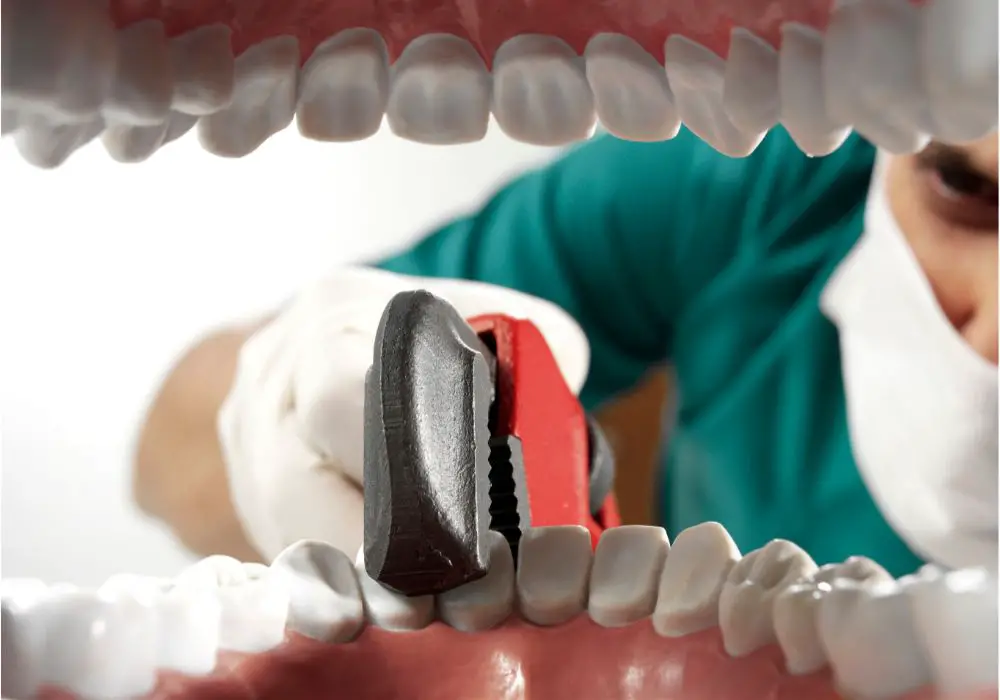
It is possible for some mildly to moderately loose teeth to re-tighten and stabilize over time under the right conditions. This may occur when:
- The tooth only recently became loose from a temporary bite issue or mild gum irritation.
- There is minimal bone loss or infection present around the tooth roots.
- The tooth shifts back into normal alignment in the socket.
- Any underlying nerve damage or occlusal trauma has been corrected.
- Improved oral hygiene resolves mild gum disease loosening.
- An impacted foreign object was removed from below the gumline.
With proper oral care and bite adjustments, the periodontal ligaments can slowly reattach in some cases. However, severely loose teeth rarely tighten on their own again.
When extraction may be avoided by orthodontic treatment
If a permanent tooth is mildly loose due to crowding or a bite issue, orthodontics may help stabilize it. By using braces or Invisalign, the surrounding teeth can be shifted to create favorable spacing. This takes pressure off the loose tooth.
Orthodontic methods to stabilize a loose tooth:
- Relieving crowding: Other teeth are moved to create needed space.
- Bite alignment: The occlusion is corrected to prevent clashing with the loose tooth.
- Tooth uprighting: A tipped tooth is re-aligned into proper position.
- Jaw repositioning: The loose tooth has room when jaws are aligned correctly.
As long as bone loss and infection are not already too advanced, this is preferable to extraction if orthodontics can correct the cause of loosening.
Why delaying extraction can make matters worse
Unfortunately, putting off having a severely loose permanent tooth removed often allows additional problems to develop over time. Potential risks include:
- Surrounding bone deteriorates further without the tooth roots embedded, limiting implant options later.
- Nearby teeth shift position or loosen due to the missing support normally given by the extracted tooth.
- Inflammation and infection spread and get out of control, sometimes developing into dental abscesses.
- Cysts or benign but invasive tumors could form in the empty tooth socket.
- Tooth decay can accelerate in neighboring teeth that drift too close together.
- Swallowing or aspiration risks increase the longer a very loose tooth remains.
The sooner a compromised tooth is professionally extracted, the better the long-term outlook. Follow your dentist’s recommended timeline.
Proper aftercare following tooth extraction
Caring for the extraction site correctly after having a loose permanent tooth removed ensures proper healing and prevents complications:
- Bite down on gauze firmly for at least 30-60 minutes following the procedure to stop bleeding and allow clotting. Don’t spit or even swallow during this time.
- Don’t rinse or disturb the area on the first day. Avoid sucking actions.
- Apply an ice pack to the facial area to minimize swelling, in 15 minute intervals.
- Take medications like antibiotics or pain relievers only as directed.
- Eat soft foods like yogurt, applesauce, broths, etc. Avoid very hot or spicy foods.
- Don’t smoke or drink alcohol, which can irritate the healing wound.
- Gently rinse with warm salt water 24 hours later to keep the area clean.
See your dentist immediately if you have heavy bleeding, severe pain, fever, or pus discharge later on. Report any symptoms of infection or poor healing.
The benefits of getting implants to replace extracted loose teeth
Dental implants offer many advantages for restoring your smile after one or more loose teeth must be pulled. Implants:
- Maintain bone volume: The titanium post fuses into the jawbone like a natural root.
- Prevent bone shrinkage: Bone loss is limited compared to removable denture use.
- Avoid shifting of other teeth: Nearby teeth remain properly aligned and don’t drift like with a missing tooth space.
- Restore the bite: Implants fuse into normal occlusion with top and bottom opposing teeth.
- Appear natural: Implant crowns replicate natural tooth color, shape and contours.
- Promote better nutrition: Allows comfortable biting and chewing with a stable restoration.
- Boost confidence: An implant tooth looks and functions like the real thing.
With predictable success rates over 95% long-term, dental implants prevent bone loss and progressive complications when a loose tooth cannot be salvaged.
Answers to Common Questions about Loose Teeth:
How long does a very loose tooth typically take to fall out on its own?
If the tooth is barely attached, it may fall out on its own within hours up to a few days. More moderately loose teeth could fully detach within several weeks to months. The more advanced the bone loss, the quicker it will be lost without treatment.
Is it normal for a young child to have a loose permanent tooth?
No, loose permanent teeth in children are abnormal unless due to a known injury. It may signal a major problem like advanced decay or gum infection requiring prompt dental care. However, loose emerging permanent teeth are common and normal as baby teeth are displaced.
Can I tighten a loose tooth by chewing gum?
Dentists do not recommend chewing gum to try re-tightening a truly loose permanent tooth. The act of chewing gum puts added stress on the already fragile tooth and can increase damage. See your dentist for evaluation and proper treatment instead.
Will I eventually need false teeth if I have a loose tooth extracted?
Not necessarily. As long as you maintain your oral health, other permanent teeth should remain strong and functional for life. Options like bridges, partials, and dental implants allow restoration of a missing single tooth or several lost teeth without needing full dentures.
Can I avoid extraction by using braces to tighten my loose tooth?
Maybe, if orthodontic treatment can fix an underlying bite issue or crowding problem that is causing the tooth to become loose in the first place. The looseness cannot already be too advanced though. Talk to your orthodontist and dentist about whether this approach may work or if pulling the tooth is inevitable.
In summary, a loose permanent tooth should never be ignored. Seeking prompt professional help gives you the best chance of saving it or restoring missing teeth effectively. Monitor your oral health closely and maintain regular dental visits for healthy smile longevity.

